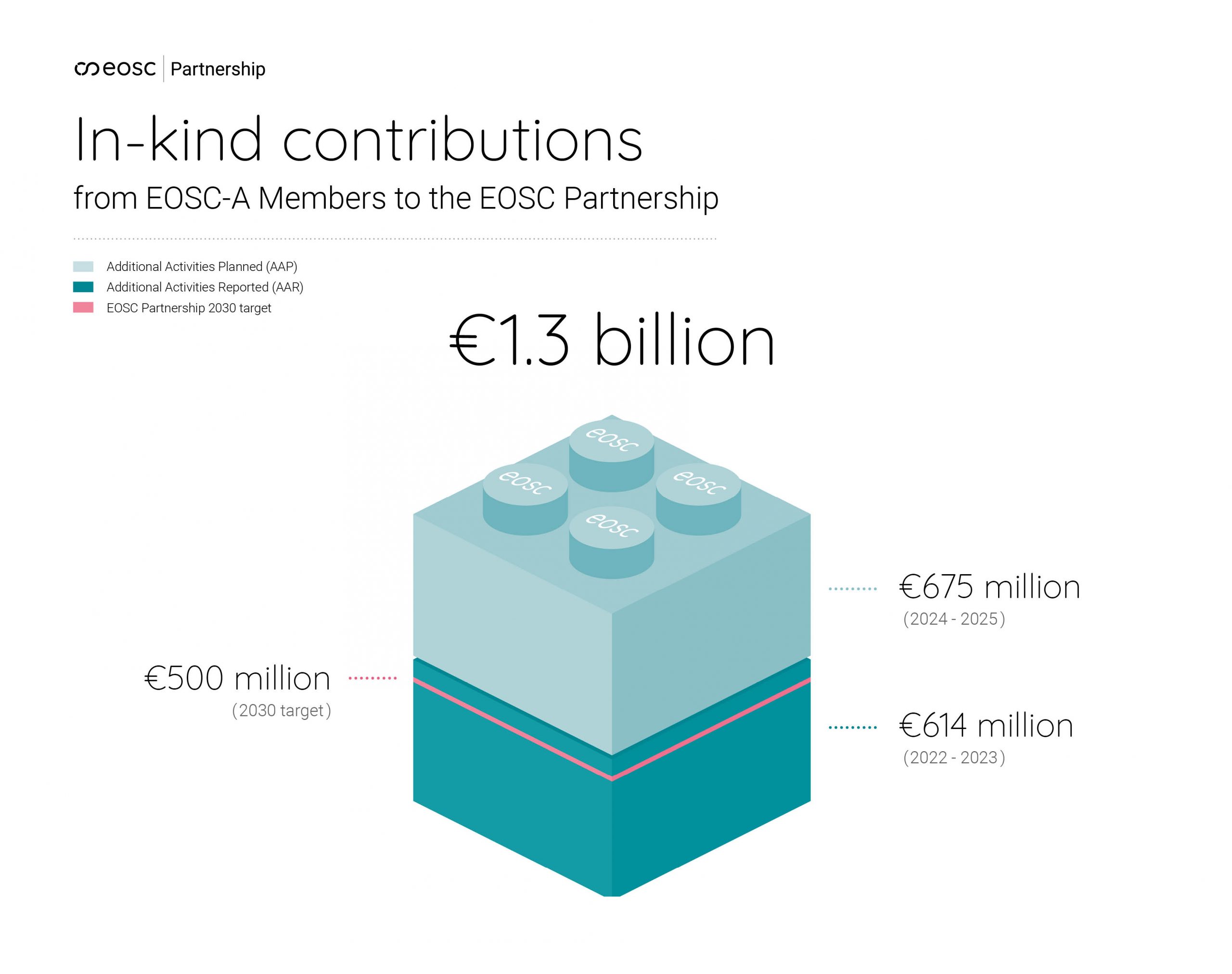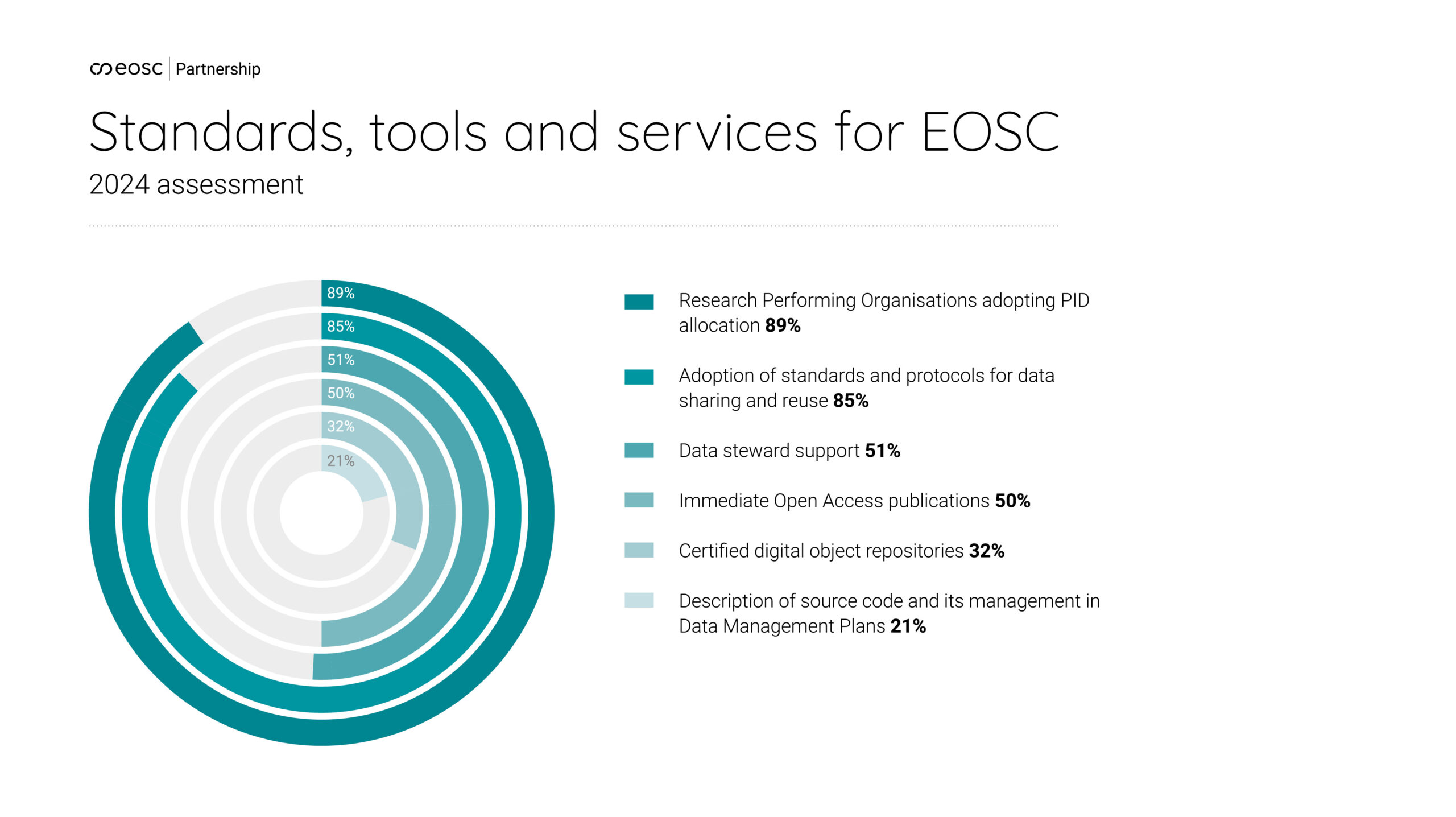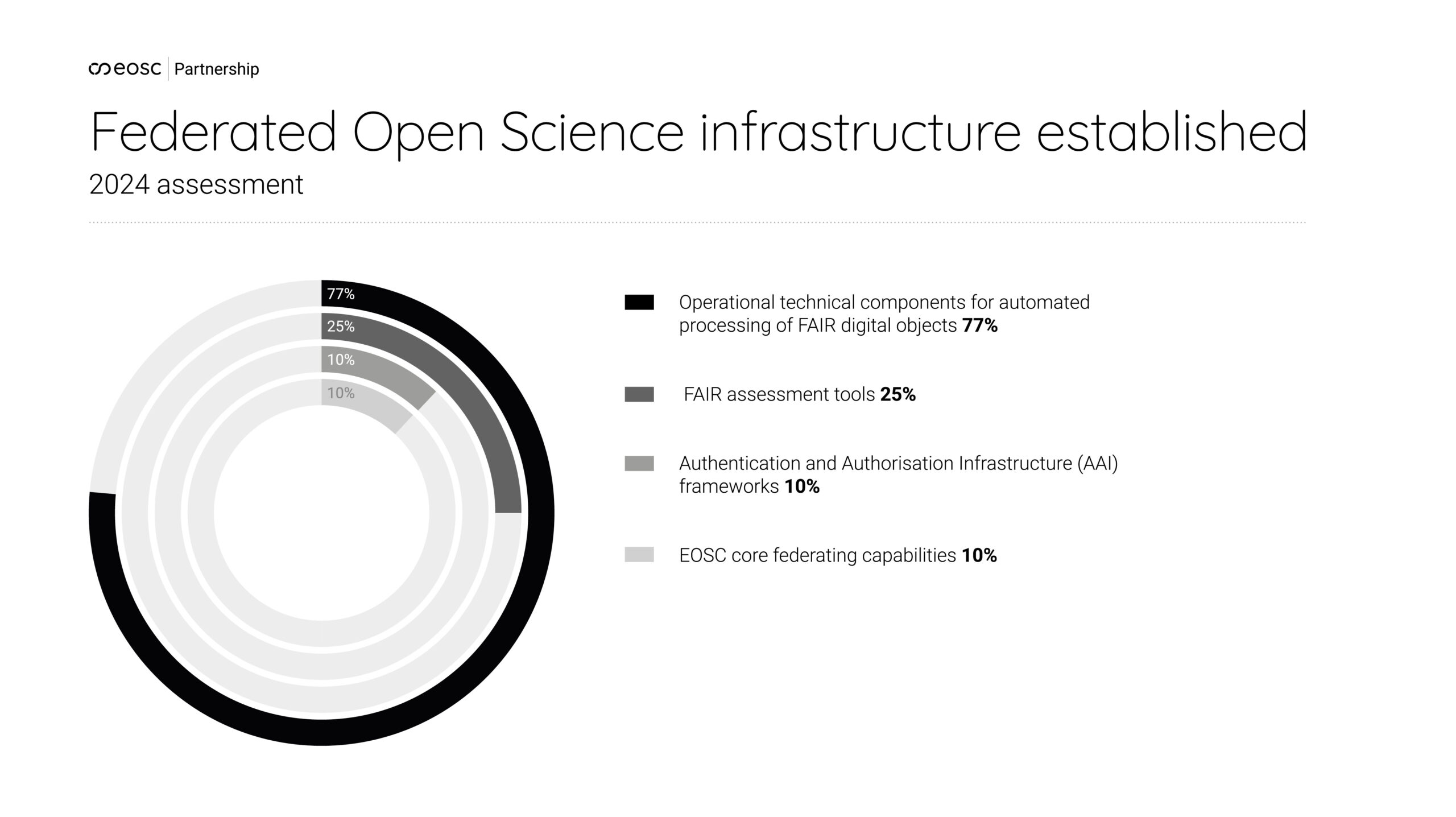
The EOSC Partnership’s Memorandum of Understanding commits the EOSC Association’s Members to investments of €500 million in EOSC-related research and innovation activities between 2021 and 2030. Combined actual and planned contributions through 2025 now total a whopping €1.3 billion over the first four years of the Partnership.
Like 10 other such Partnerships advancing the EU’s digital ambitions, the EOSC Partnership is required to monitor progress toward the objectives of its strategic agenda. Together, the two parties to the Partnership monitor this progress via two mechanisms:
- By tracking the in-kind contributions by EOSC-A Members towards the Partnership’s objectives, via their Additional Activities; and
- By defining, baselining and measuring the Partnership’s Key Performance Indicators (KPIs).
Anchoring EOSC at the institutional level
Monitoring of the Partnership reveals that EOSC-A is greatly exceeding its performance expectations, thanks to the extraordinary monetary value of our membership’s in-kind activities. The numbers confirm the degree to which the Association has succeeded in anchoring EOSC deeply within the structures and operations of diverse institutions throughout Europe.
Advancing the strategic objectives
Measuring the Key Performance Indicators reflects the status of the overall advancement of the EOSC Partnership and assesses its progress towards general, specific and operational objectives at the institutional, national and European levels. The circle graphs show the 2024 assessment of selected KPIs.



